
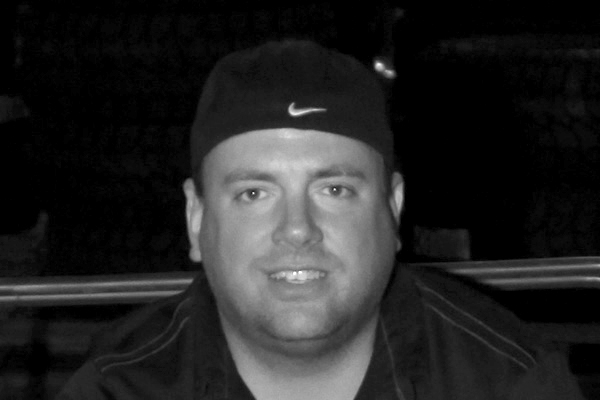 Pete Trasborg
Brand Manager, Jp
Photographers:
505 Performance
Pete Trasborg
Brand Manager, Jp
Photographers:
505 Performance
We’ve bagged on the 3.8L V-6 in the JK pretty much since the Jeep came out. It got pulled out of a minivan and stuck in the Jeep. It wasn’t a V-8, it wasn’t a diesel, and it wasn’t our beloved 4.0L inline-six. In short, we felt we got gypped and were angry at Jeep for it. We know most of you were too.
Then the problems started surfacing—oil consumption, the spun bearings, and just generally not being as reliable as the 4.0L it replaced. Surely, there must be a better engine to put in our beloved Wrangler. Sure enough, there was, and it showed up five years into the production of the JK in the form of the 3.6L Pentastar V-6. However, that still left us with five years of minivan engines that didn’t always cut the mustard.
This brings us to the beginning of this year. The 3.8L V-6 in our ’07 had managed to get up to burning a quart of oil about every 800 miles, and we were running Royal Purple in it. Not a cheap habit. After a few months of that, it started clattering badly at startup and heating up really fast. If you don’t already know, an engine that heats up super quick can be a sign of impending doom. Of course, we were due to take it out on the Rubicon—not exactly the place to blow an engine or take something that is less than 100-percent. That is, unless you like walking, of course.
So, we started looking into options for a powerplant for our barely 100,000-mile JK. A V-8 swap just isn’t cheap, cuts into fuel economy, and often has teething issues. We needed this thing to be reliable out of the box and not have any growing pains. We just wanted it to work.
We started looking at just replacing the factory V-6. We’d just swapped in a new transmission, flywheel, and clutch. In order to not throw all that money out, it just seemed to make the most sense. However, a replacement long-block runs somewhere around $2,500 for a decent one. We were burning a quart of oil every 1,000 miles for about 20,000 miles before the clattering started. As such, we were looking in the face of a $2,500, 80,000-mile gamble—that is, if we were lucky, we’d get 80,000 miles out of it. We ran smaller tires and treated it much nicer when it was brand new. We think 80,000 might be optimistic.
That seemed like a waste of money, not to mention the weekend we’d lose to swapping engines. We were halfway to simply taking our good hiking boots to the Rubicon when we spoke with 505 Performance. It turned out the company had seen many of the same valvetrain and bottom-end issues, had identified them, and figured out how to fix them. In the process, the company developed a stroker kit that bumps the 3.8L V-6 out to 4.1L and puts a lot more power to the ground. That’s in addition to making a more reliable powerplant in the process. Sounded like a win-win to us.
We got together with the company to build the new engine and show you guys some of the problems the factory engine has in the process. We ended up with a mid-line Stage Two engine, which means our heads are mildly ported and cleaned of casting flash. Stage One doesn’t have the headwork, and Stage Three has even more work done and a more aggressive cam.
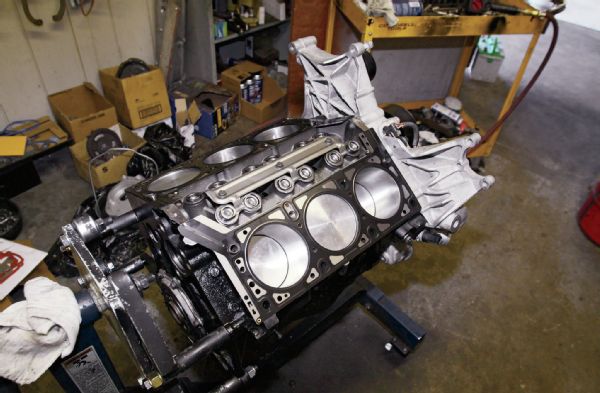
Here you can see the flat-top pistons in the holes. For our swap, 505 Performance went ahead with our blessings and experimented a little bit with our engine. The piston and cam specs were a bit more aggressive than what a normal build would have been, but the engine idles fine and crawls great. Whether that is due to our 53-pound Centerforce flywheel or not, we can’t say. More on the flywheel in the next issue, but one thing is for sure: This combo works great off-road.
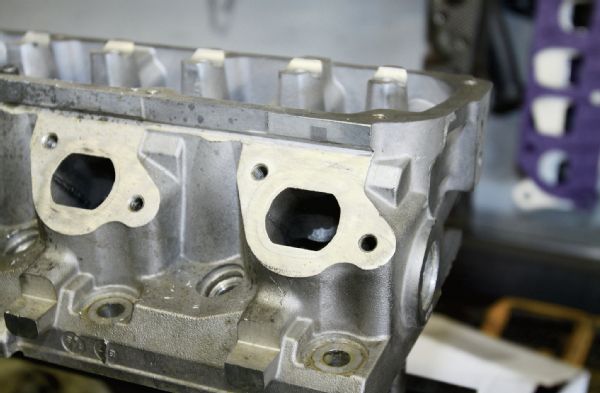
Here you can see the casting flash he was after. Not only did he remove all of this, but he also opened the throat of the exhaust ports and gasket-matched the heads to our new headers.
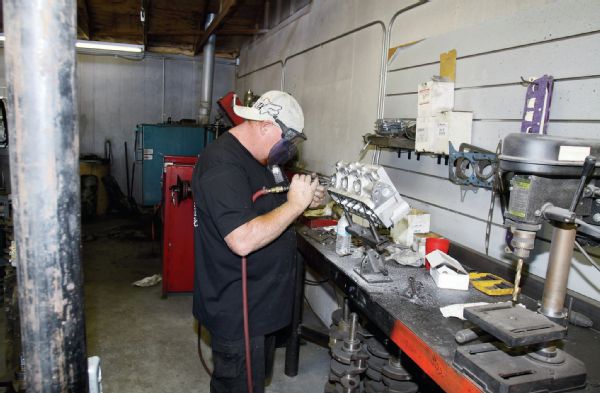
Here’s the owner of 505 Performance doing what he likes to do. He’s an engine guy through and through. From CNC machining to hand-porting heads, he’s in his element, and it’s just fun to watch him setup machines or tear into a head like this.
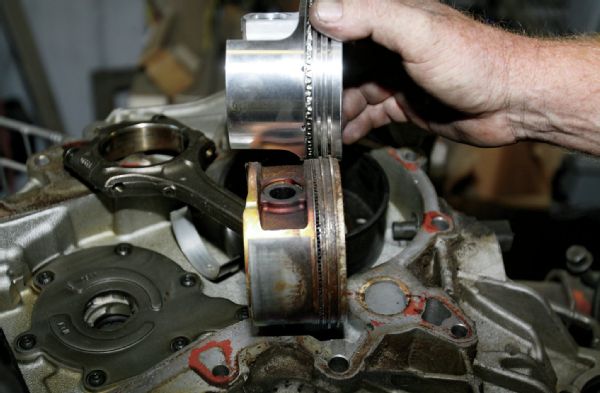
And now we get into the rings. The piston in the foreground is the factory part. The one in the background is the new custom-forged part. For those of you who don’t know, the ring to the left (the lowermost ring), is the oil ring. It keeps the oil out of the combustion chamber. Even Forrest Gump can tell the size difference.
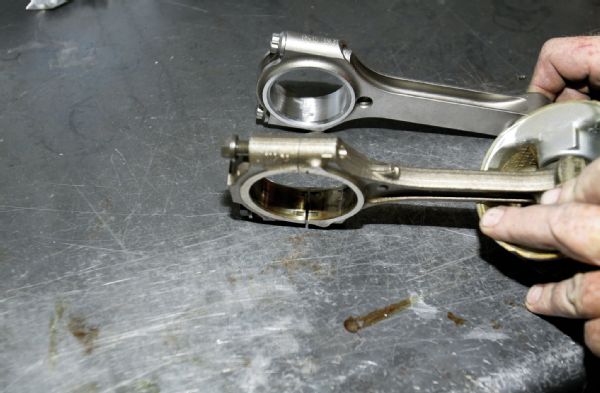
Because the crank is offset ground to get the additional stroke, the new H-beam rods (seen towards the rear of this photo) have a smaller inner diameter than the factory rods. But because they are forged and not cast, they are much stronger than the factory parts could ever hope to be.
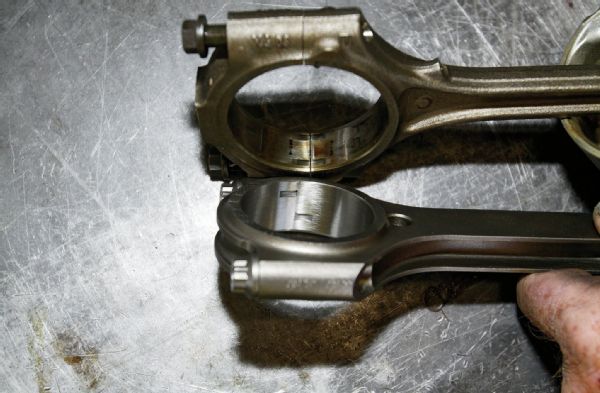
There’s a lot of hype about the JK engine spinning bearings, and here’s why: In a normal engine, the bearings have wedge-shaped design. On the 3.8L, they are moon-shaped, kind of like a keyway on a T-case. That means that if you get it really hot and the rod caps expand, the bearings will spin. That results in oil starvation to the rod bearings. So, 505 cured this by using more regular-shaped bearings with the wedge-shaped retainers.
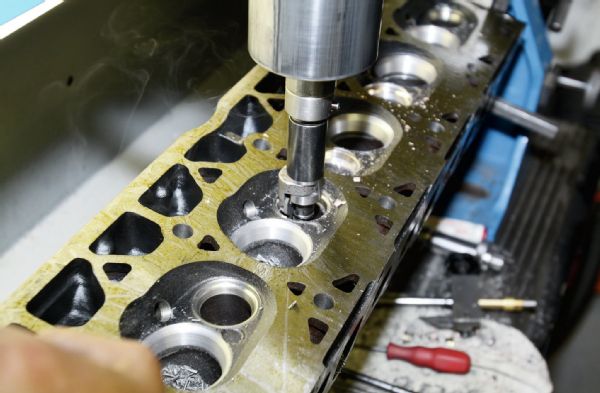
One of the cool things about 505 Performance is that the company has been doing engines for generations now. They have both the machining equipment and the know-how to rebuild or hop-up basically anything that burns fuel. Here’s a shot of the CNC machine that does the five-angle valve jobs.
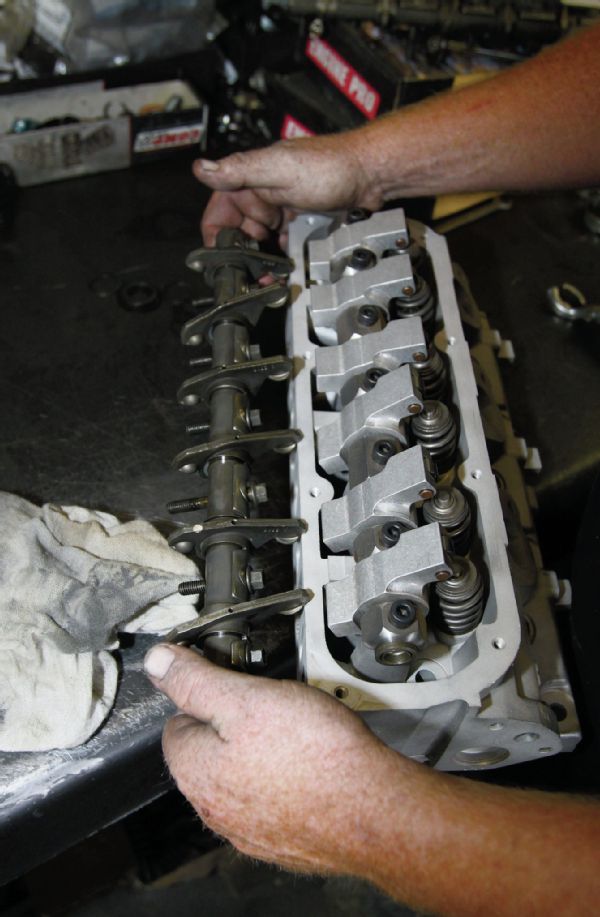
On the left you can see the factory JK rocker arms. One thing the factory did right was to go with a shaft-mounted rocker-arm setup. On the right is a prototype roller-tipped rocker setup from 505. Once we get the production rockers, we’ll stick this thing on the dyno and check out the power it puts down.
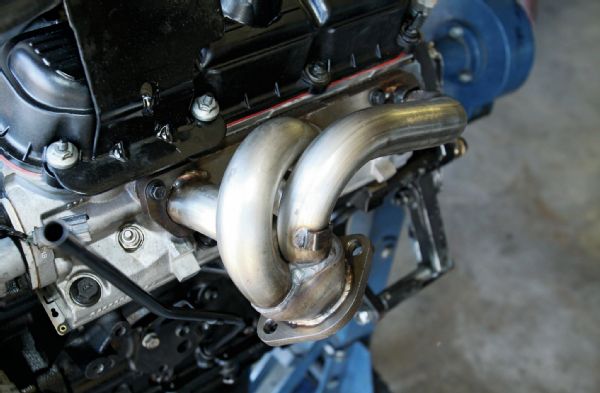
Following 505’s recommendation, we went with Rugged Ridge headers rather than the factory parts to let the new engine breathe better. We’ve had problems with headers on this Jeep in the past, but so far, aside from a few spark plug routing issues, these have worked out great.
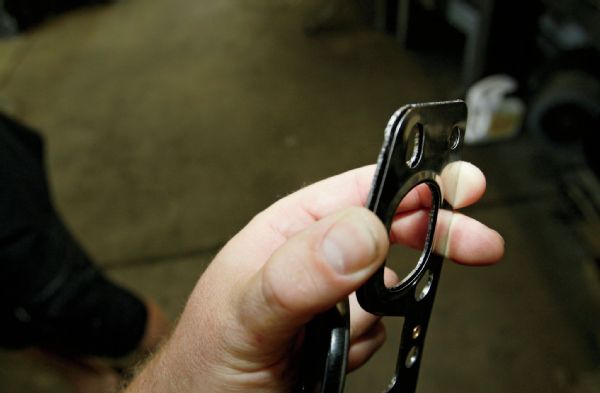
The headers come with a hardcore gasket that we were totally psyched to see. While we won’t say that the dual-layer gasket is the reason for us having no leaks, it sure doesn’t hurt. The 3⁄8-inch flanges don’t hurt matters either.
PhotosView SlideshowWe also went with Accel 8.8mm spark plug wires (PN 8026). Since we’ve had issues with headers burning plug wires in the past, we picked up the fireproof Accel spark plug boots too. The only thing with that part number is that you have to cut and chop to make the plug wires the right length. Fortunately, this wasn’t 505’s first rodeo, and they knew exactly how to route the spark plug wires to avoid the wire melting problems we’ve had in the past.
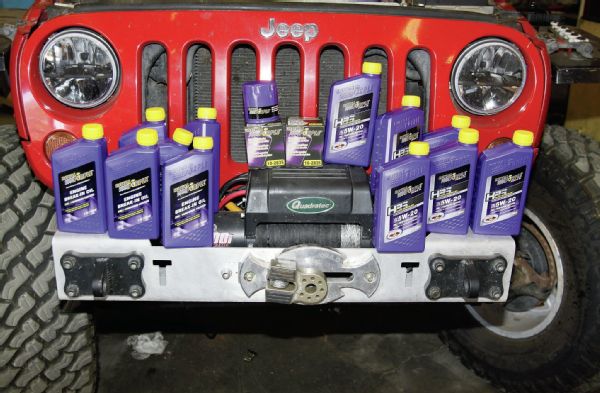
For break-in and initial running, we used Royal Purple’s break-in oil and subsequently some 5W-20 synthetic. While the break-in oil is better suited for flat-tappet cams, with this roller-cammed engine, we probably didn’t need it, but we opted to play it safe with this engine. So far, it’s been working out great for us.
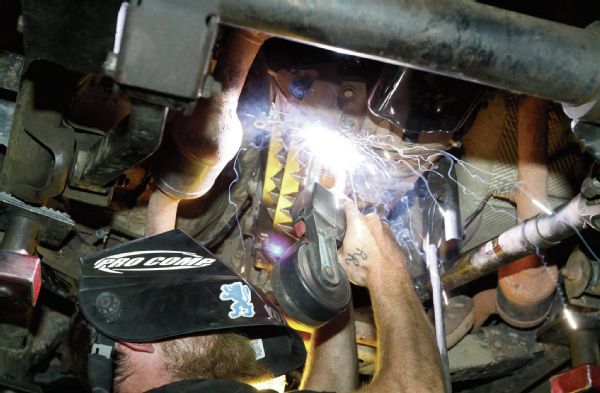
While we were at 505’s shop, they were bothered by the crack in our NVG370’s bellhousing. We had previously drilled the end of the crack so it wouldn’t spread anymore, but since they had a spool gun all ready to go, 505 welded the crack up for us. Hopefully this gives us more life out of our newly swapped-in transmission.
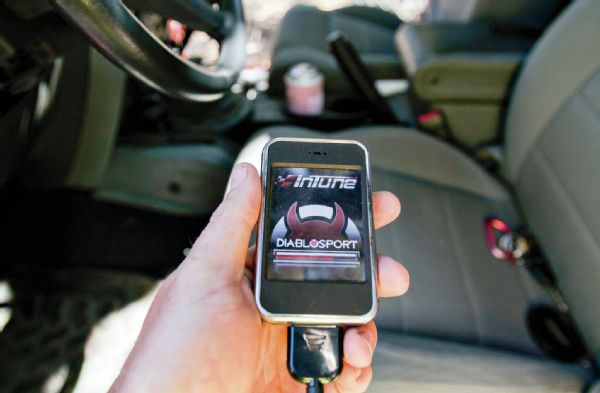
One final thing that 505 Performance wanted us to do was to put a Diablosport I-1000 tuner on the Jeep. With it, 505 was able to dial in the timing and fuel ratios to make more power on the top end. We didn’t even need new injectors to do it. The tuner also is able to adjust for tire size, gear ratios, and more.
Engine Specs
• Custom H-beam rods
• Custom forged RaceTec pistons
• Billet Roller camshaft upgrade
• Fully ported factory cylinder heads
• Five-angle valve job
• New beehive valve springs
• Custom machined crankshaft with 1⁄4-inch more stroke
• Two rings upgraded to 1⁄16 inch and the other to 3⁄16 inch to eliminate the problematic oil consumption issues found in the 3.8L Wrangler engines
• All assemblies are balanced, blueprinted, and decked
• Piston Material: 4032 hi-silicone forged. The benefit of these pistons is the durability of a forged piston and that the setup clearance is like that of a factory cast piston.
• All engines come with: New head bolts, new gaskets, new lifters, new oil pump, new timing set
• Cam Specs: 199/207 on a 113 degree separation, 0.501-inch lift
• Complete engines are $5,400, including a $500 core charge
Real World Comparison
You can expect to see between 170-200hp at the rear tires depending upon tire size and drivetrain. Stay tuned, because we are still hoping to strap this thing to the dyno. We are seeing a 2 mpg gain with this engine, if we stay out of the fun pedal.

